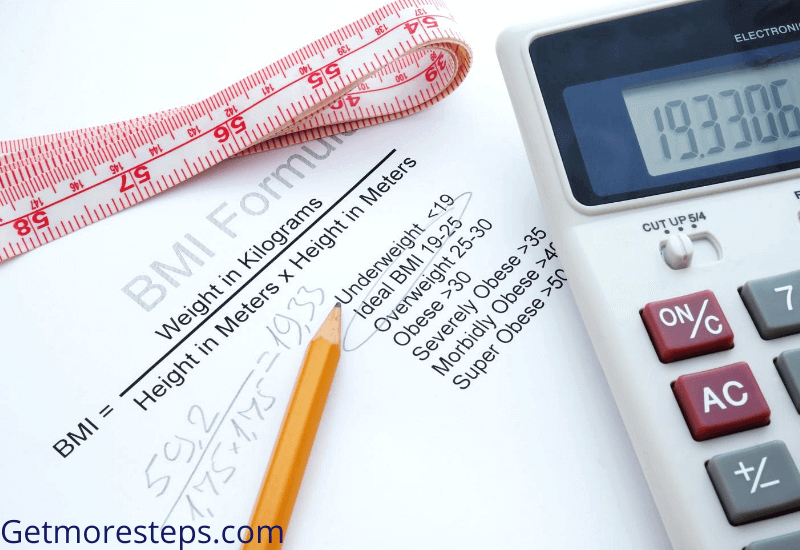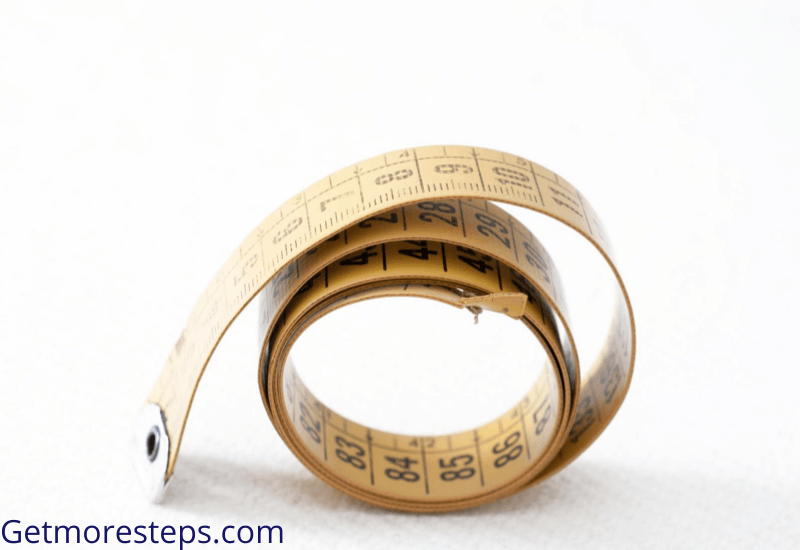If you’ve never measured your BMI until now, then it might be time to do it. Why? Well, because this is what determines whether you are within a healthy weight range. The more fat you are carrying, the more risk you are at developing health issues. But the BMI doesn’t always tell how healthy someone is on the inside. You can be skinny and unhealthy. However, in most cases, overweight or obese people are likely to suffer from heart diseases and other life-threatening conditions. In this article, you’ll find out what is BMI and what does it really means.
What is BMI?
Contents
- 1 What is BMI?
- 2 Body Mass Index Calculator
- 3 Your BMI is: ?
- 4 This means you are: ?
- 5 Why it’s Important to Know Your BMI?
- 6 How to Calculate My BMI
- 7 IS BMI Correct for Everyone?
- 8 What Can Your BMI Show
- 9 Does a Normal BMI Mean that You Are Healthy?
- 10 How to Change Your BMI?
- 11 Are There Better Ways to Know Your BMI?
- 12 BAI
- 13 Old Fashioned Tape Measure
- 14 Waist-to-Hip Ratio
- 15 Hydrostatic Weighing
- 16 Dual-Energy X-ray Absorptiometry (DXA)
- 17 Air Displacement Plethysmography (Bod Pod)
- 18 Bioelectrical Impedance Analysis (BIA)
- 19 Conclusion
The BMI is your body mass index, which is your weight in kilograms divided by your height in meters squared. It’s a diagnostic measurement often used by doctors to figure out what your body’s fat percentage is. It is considered to be one of the easiest and cheapest methods to know your weight category. (Underweight, healthy weight, overweight, and obese)
Body Mass Index Calculator
Enter your height:
Enter your weight:
Your BMI is: ?
This means you are: ?
Why it’s Important to Know Your BMI?
Researches show that BMI is linked between the risk of several diseases and premature death. If your BMI increases, the risk of getting sick increases too. A person with a high BMI could potentially develop:
- Heart disease
- Diabetes
- Hypertension
- Stoke
- Osteoarthritis
- Some cancers
- Gallbladder disease
- Osteoarthritis
- Sleep apnea
How to Calculate My BMI
You can use two effective formulas to calculate your BMI, depending on whether you are using imperial or metric measurements.
Kilograms and meters method:
BMI = Weight (kg) / height (m 2)
In short, the calculation is straightforward. You need to calculate your weight in kilograms and divide it by your height in meter squared.
For example
Weight : 75 kg, Height 175 cm (1.75 m)
Calculation: 75 ÷ (1.75 x 1.75) = 24.489 BMI
Pounds and Inches Method:
Weight (lb) / [height (in)]2 x 703
You should calculate your BMI by dividing your weight in pounds (lbs) by height in inches (in) squared and multiplying by 703.
For example:
Weight : 160 lbs, Height = 5’5” (65″)
Calculation: 160 ÷ (65 x 65) x 703 = 26.622 BMI

IS BMI Correct for Everyone?
Although there is a relation between BMI and body fatness, researches show that BMI does not work for everyone. For example, athletes or bodybuilders have a higher percentage of muscle mass, but that doesn’t mean they are overweight or obese. (Muscles weigh more than fat. Women have about 6 to 10 percent more body fat than men. And Older people have more body fat than younger people. So BMI won’t work well for these groups of people who want to know about their body composition.

What Can Your BMI Show
You BMI can indicate that you are either:
- Underweight – 18.5
- Healthy weight – 18.5 to 24.9
- Overweight – 25 to 29.9
- Obese – 30 and over
- If you are underweight, it could mean that you suffer from malnutrition, hyperthyroidism, anemia, or osteoporosis. You should see a nutritionist who creates custom meal plans to gain weight and change your eating habits.
- If you are in a healthy weight range, try to maintain your weight to prevent developing health issues.
- If you are overweight, this means you are not eating correctly and not moving enough. So you need to change the way you eat and exercise to get back to a healthy weight.
- If you are obese, you are more prone to develop a disease such as cholesterol, joint injuries, hypertension, diabetes, and others. You need to get help from a nutritionist to change your habits and establish new ones, and, of course, exercise more.

Does a Normal BMI Mean that You Are Healthy?
Not necessary. You can be a healthy person and have a body fat percentage within the range of overweight or obese. My BMI is normal, but I suffer from high cholesterol for years and lower it by walking and eating low index glycemic food. I know some people that have a healthy BMI and suffer from diabetes or hypertension. So BMI is just to show you that you are more at risk of developing diseases but doesn’t mean you are unhealthy or healthy. Even if you have a normal BMI, it’s always advisable to get regular physical exams through your healthcare provider. Smoking, drinking alcohol, eating fat foot, and stress put you more at risk of developing chronic diseases.
How to Change Your BMI?
If you want to change your BMI, there is no secret; you need to change your eating habits and exercise. That’s it! It sounds easy, and in fact, it’s easier than you might think. Replace refined food with low glycemic index food and walk. You’ll get good results if you stick to it. If you are not used to walking long distances, gradually add more steps every day. Avoid making big changes, do it slowly and surely. You could start by
- Cutting out sweet drinks and fried foods
- Drink more water.
- Eat more fruits and vegetables.
- Avoid mixing protein with carbohydrates; it leads to poor digestion.
Changing all your habits at once could discourage you from reaching your goal. It would be best to make one small change every week.
As I said above, exercising is a great way to burn fat and boost your metabolism. Walking is an excellent form of exercise as it doesn’t put stress on your joints and, when done correctly, helps you lose weight. For this, you should walk at a fast pace of 3 to 4 mph, but again, don’t force. You could aim for 1 mile per day and add a mile every month until you reach 5 miles a day, which is 10000 steps. Always do some stretching before and after walking to avoid injuries.

Are There Better Ways to Know Your BMI?
Some scientists came up with new alternatives and improved formulas for BMI. Here are some other options available for you:
BAI
Although this method has not been proven to be more efficient than BMI, many scientists believe that BAI is more accurate and precise enough to estimate body fat. BAI is calculated differently than BMI as it doesn’t use your weight. BAI uses a formula that multiplies your hip circumference by your height.
Body Adiposity Index = (Hip Circumference in centimetres / Height in metres ^ 1.5) – 18
This is the same as:
Body Adiposity Index = (Hip Circumference in centimeters / Height in meters × Square Root of Height in meters) – 18

Old Fashioned Tape Measure
One of the best alternatives to BMI is waist circumference measurement. This technique helps detect health risks that come with overweight and obesity. If you carry more fat around your waist than at your hips, your risk of developing heart diseases and type 2 diabetes will be higher. This method consists of measuring your waist with a tape measure around your middle, just above your hip bones. According to physicians, men with a waist circumference of 40 inches and over and women with a waist circumference of 35 inches and over are in the “at-risk” group.

Waist-to-Hip Ratio
The waist-to-hip ratio is an excellent method to know how much excess weight you are carrying and the risk of developing health issues like heart diseases, diabetes, and more. You calculate your waist-hip-ratio by measuring your waist with a tape measure at your hips’ widest part. Once you’ve done that, divide the circumference of your waist by your hip circumference measurement. For example, if you have 30″ (76cm) waist, divide by 38″ (97 cm) hips = waist-hip ratio of about 0.78.

Hydrostatic Weighing
According to scientists, hydrostatic weighing, also known as underwater weighing, is an excellent way to calculate body fat. This a fun way to measure body mass, but here is how it goes. You sit on a chair in the water on a scale set to zero. You need to pinch your nose and place your head under the water, then exhale all the air from your lungs without moving. Your weight is then taken and passed through a series of formulas that provide your body fat result.
Dual-Energy X-ray Absorptiometry (DXA)
This method uses X-rays of two different energies to calculate your body mass index. The DXA requires lying on the back for about 3 minutes while X-ray scans over the body. The radiation from the DXA scan is very low; you get almost the same amount of radiation from using an iPhone for three hours. The DXA is also used to provide in-depth information about lean mass, fat in arms, legs, and torso, and evaluate the density of your bones.
Air Displacement Plethysmography (Bod Pod)
The ADP is very similar to hydrostatic; the difference is that the ADP is done inside an egg-shaped chamber. This technique consists of sitting in an egg-shaped pod for about two minutes in a swimsuit while the air pressure is altered. This ADP uses advanced technologies to determine body density.
Bioelectrical Impedance Analysis (BIA)
The BIA calculates your body mass using electrodes on the skin. These electrodes send a weak electric current that flows through the body. The voltage is then measured to calculate the body mass index.
According to scientists, BIA is more efficient in measuring body fat percentage than BMI and Skinfold methods.
Conclusion
Now that you know what BMI is, measure it to determine whether you need to lose weight or gain weight. If your BMI is high or low, you know what to do. Eat healthily and exercise! You can get help from a nutritionist or, if you prefer, follow suggestions of weight loss books. Some of them have excellent weekly meal plans that will help you lose weight. Whatever you decide to do, it is highly recommended that you get physical exams and ask for advice from your doctor before you begin any form of exercise or diet.
Have you measured your BMI? If so, was it accurate? I would love to know.

I don’t know about you, but I love my feet because they allow me to walk and go wherever I want to go. Without them, I would be lost! So I always spoil them with a good pair of walking shoes to make sure they are as comfortable as possible. If you take care of your feet, they will take care of you and your health. Well, fitted shoes will protect them and allow you to get more steps without pain!
Read more about me
